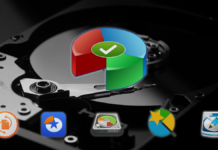
Content:
HIPAA compliance is an essential part of the law for all contemporary healthcare organizations, be it hospitals, doctors’ surgeries, dentists, or ophthalmologists. All healthcare establishments must comply with HIPAA, while health insurance agents must also pay heed to this legislation as well. But what exactly is HIPAA?

US Legislation
HIPAA refers to the Health Insurance Portability and Accountability Act of 1996, US legislation that is intended to protect online data privacy and security in healthcare settings. It is particularly aimed at safeguarding medical information, and the law has become increasingly prominent in recent years due to the proliferation of data breaches caused by cyber attacks and ransomware demands.
The second title of HIPAA requires the United States Department of Health and Human Services to establish national standards for the processing of electronic healthcare transactions. Healthcare organizations must also put suitable processes in place in order to secure electronic access to health data and to ensure compliance with other regulations set by the department, which are constantly evolving.
Achieving Compliance
HIPAA has been established in order to ensure that healthcare data remains secure. This will become complex in the years to come, as healthcare systems increasingly migrate to technology such as cloud platforms. Meanwhile, healthcare professionals are far more likely to require access to healthcare data from a wide variety of sources, and typically via mobile devices. This means that meeting HIPAA has become ever more complex and involved for healthcare organizations.
Maintaining compliance with HIPAA means addressing several different aspects of your internal IT systems. The foundation of this will be the wireless network, through which all data ultimately flows. The first thing to note with this is that outdated equipment can mean you are in breach of HIPAA almost immediately. So it’s obviously important to ensure the hardware is kept up-to-date. If you look at a VPN solution, for example, this PIA review, it is also obvious that VPNs can contribute to security, and ultimately HIPAA compliance.
Computerized Operations
Central to HIPAA is the switch to computerized operations, such as computerized physician order entry systems, electronic health records, and digitalized radiology, pharmacy, and laboratory systems. Care management and self-service applications are also impacted, and overall the shift can be quite challenging for any hospital, requiring a complete rethink of digital strategy and even hospital inventory.
However, although these moves potentially help speed up the healthcare system, they also make security provisions far more complicated. HIPAA is flexible enough to include provisions for individual institutions to implement policies, procedures, and technologies that are suited to the entity’s size, organizational structure, and modus operandi. But implementing HIPAA is still a big task.
The Department of Health and Human Services also requires the following to be put in place under HIPAA law:
- Limited facility access and control with authorized access in place.
- Policies about use and access to workstations and electronic media.
- Restrictions for transferring, removing, disposing, and re-using electronic media and ePHI.
- The technical safeguards of HIPAA require access control allowing only for authorized personnel to access ePHI.
In order to ensure compliance, the Health Information Technology for Economic and Clinical Health (HITECH) Act was passed by the US government, which includes stringent penalties for those healthcare organizations that fail to respond to the new law, and violate HIPAA Privacy and Security Rules. This means that all organizations operating in the healthcare sector must implement a stringent data protection strategy in order to comply with their new legal requirements.
HIPAA Steps
Designing a wireless network appropriately will also be crucial to the success of your security policy, and ultimate compliance with HIPAA. Coverage and capacity needs must be addressed adequately while having a clear idea of your coverage space is also paramount to design and implementation. High-density areas, floor plans, indoor and outdoor spaces, the type of building materials used, and other details are all significantly important when implementing your Wi-Fi system.
You should also take into account the number of access points that are required, and the coverage area that each is intended to address. Choosing the appropriate access points and installing them appropriately will greatly impact upon the service coverage of your Wi-Fi, as well as the network security. Many healthcare sites that are required to comply with the HIPAA regulations actually suffer from poor design, compromising this process.
Additionally, firewalls are of critical importance, not only to be in place, but also to be configured correctly. You simply cannot deliver secure and reliable Wi-Fi services as a healthcare organization without delivering a satisfactory firewall solution as part of this process. Mobile Wi-Fi devices such as wearables, tablets, phones, and medical equipment rely on network functionality in order to perform and deliver valuable information, which can sometimes be the difference between life and death. In order to comply with HIPAA, it is thus essential to ensure that all devices are properly configured.
RBAC and Software
Another important design in delivering a secure Wi-Fi network is the implementation of Role Based Access Control (RBAC). Technology helps you to segment your traffic, also assigning different permissions to various users. This is essential in a healthcare environment, where vastly different provisions and security clearances can apply to different people accessing the network. And the separating and segmentation of devices and user access will help with sensitive patient information and records and enable healthcare organizations to continue to comply with HIPAA.
Finally, software and staff training is also extremely important in HIPAA compliance. Using up-to-date programs, and ensuring that they are patched on a regular basis, should be considered essential, while employees also need to be kept up to speed with the latest developments. Training staff to use systems appropriately is important, and this shouldn’t be a one-off process; IT security training should be viewed as very much an ongoing concern.
Not only will attention to security enhance the safety of patient data and the reputation of healthcare organizations, it will also build trust with practitioners and patients, ensure HIPAA and HITECH regulations for access, audit, integrity controls, data transmission, and device security are met and improve the way that sensitive data is monitored and analyzed. HIPAA may be a big undertaking, but it also offers big opportunities to hospitals and other healthcare bodies.






























